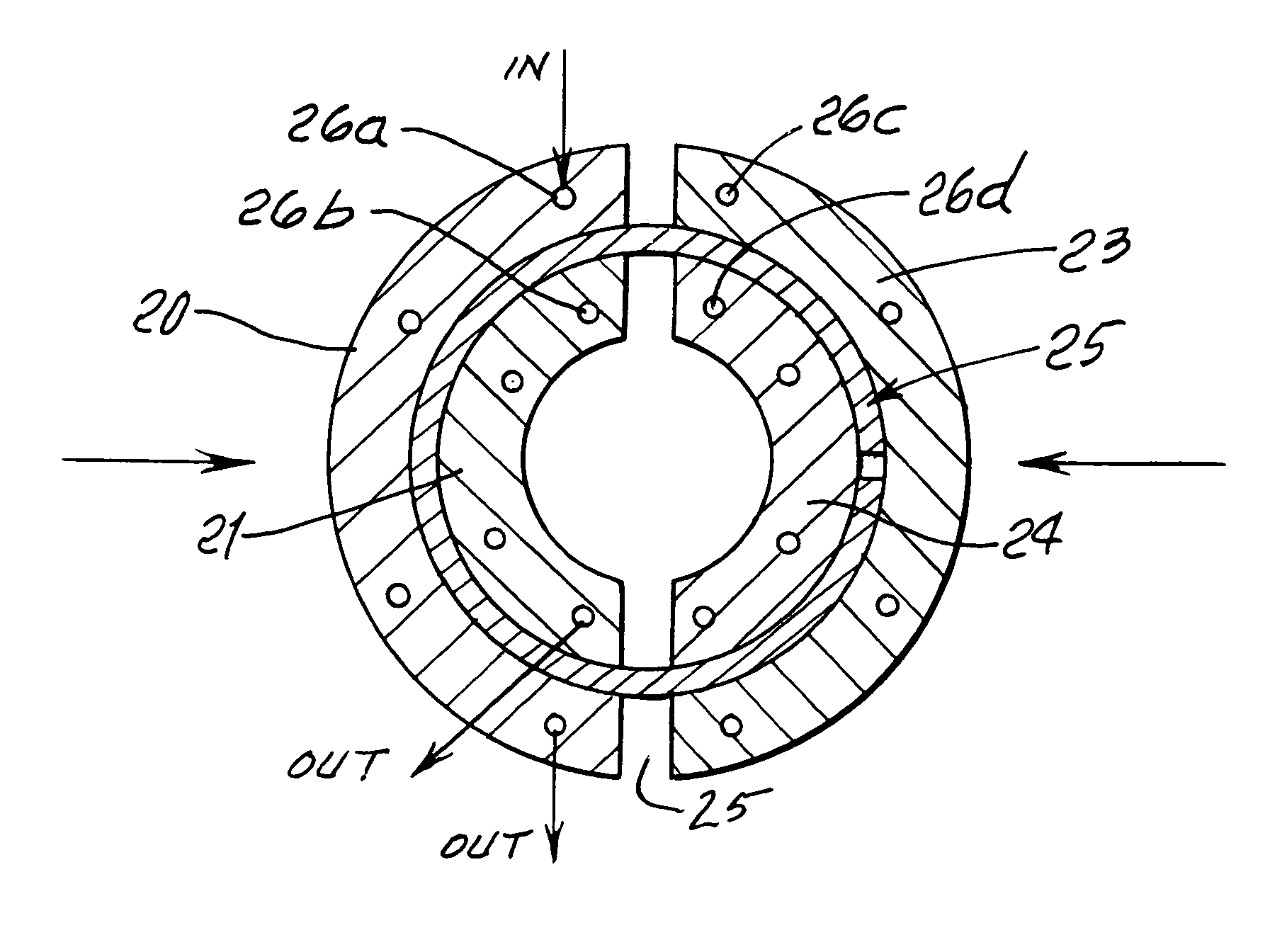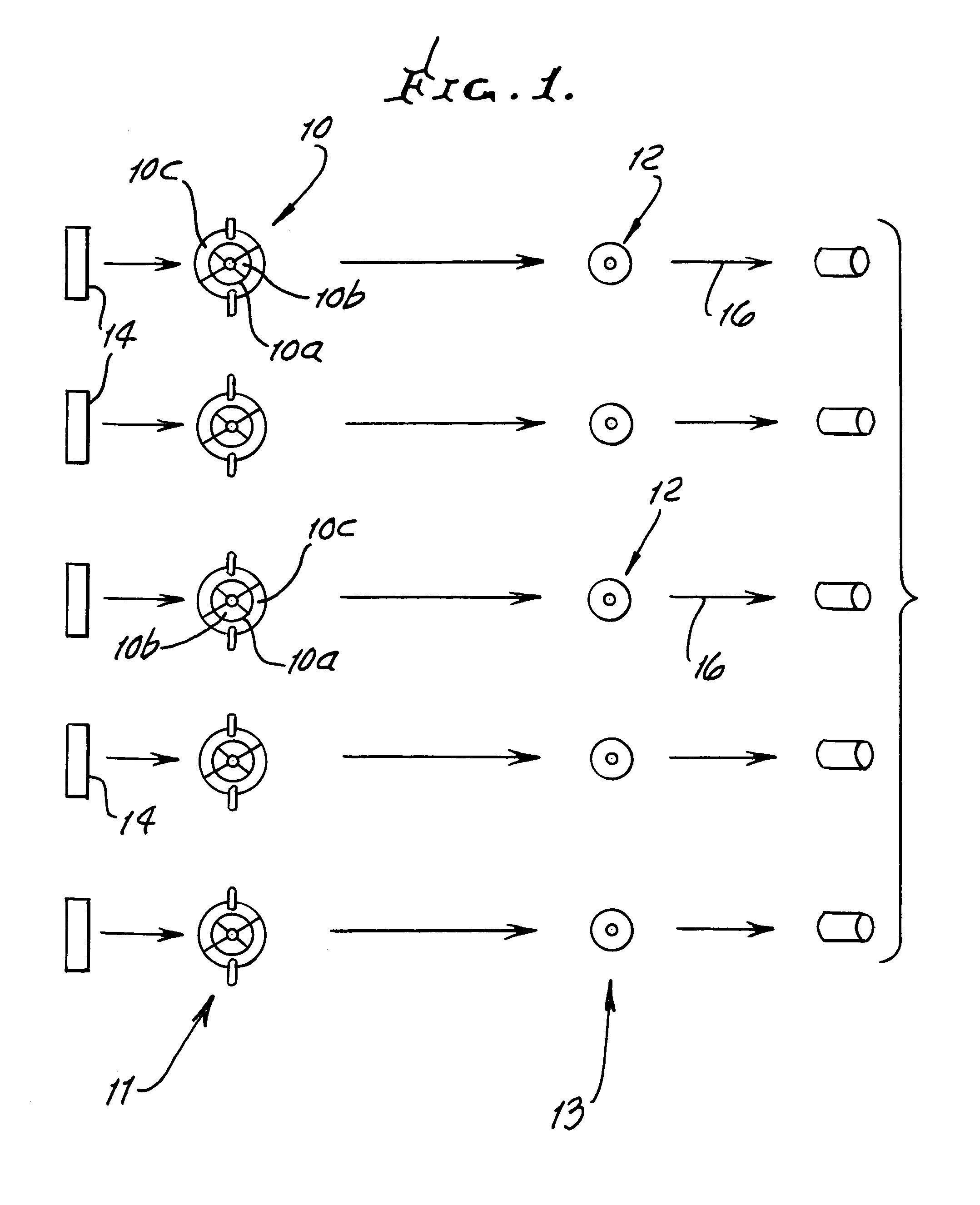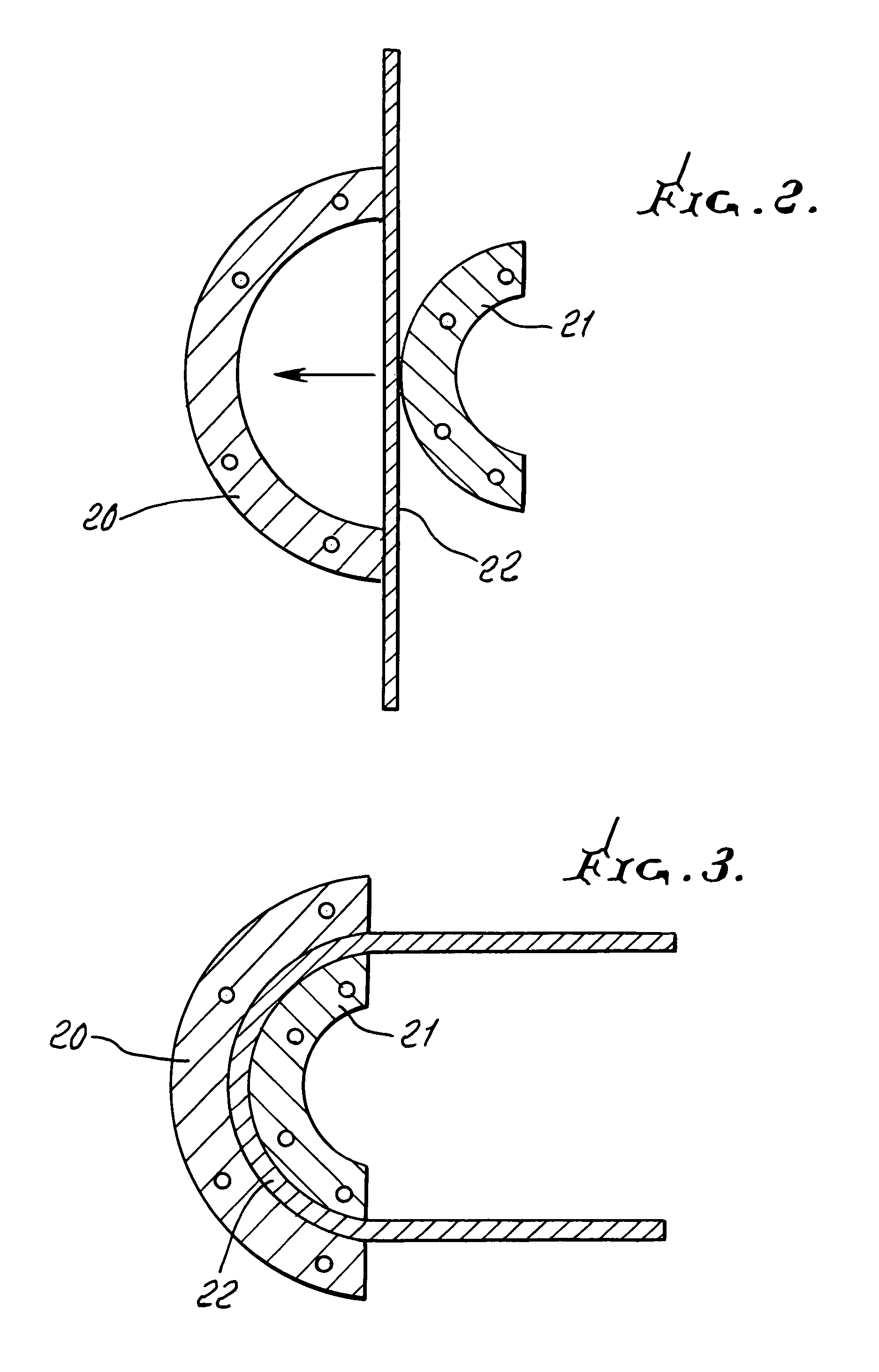Drum shell formation
- Summary
- Abstract
- Description
- Claims
- Application Information
AI Technical Summary
Benefits of technology
Problems solved by technology
Method used
Image
Examples
Embodiment Construction
[0032]In FIG. 1, a first bank of drum shell heating platens 10 is shown at 11; and a second bank of drum shell cooling platens 12 is shown at 13. Plywood blanks 14 are received by and between inner and outer platens, as at 10a, to receive heat and pressure to adhesively bond the plies together in cylindrical configuration. Inner platen cylindrical segments appear at 10b, and outer platen cylindrical segments appear at 10c. After time T between the platens 10, the latter are adjusted to allow removal of the formed hot shells, and transfer thereof to the cooling inner and outer platens 12. Therein, heat is withdrawn from the shells, kept at high pressure exerted against inner and outer side walls of the shells, i.e. maximum heat transfer wall area with surface-to-surface contact is utilized for efficient, uniform, and rapid cooling, without distortion. Platens 12 are like platen 10, but are kept cooled.
[0033]Thereafter, the shells are removed from bank 13, as shown at 16. During such ...
PUM
 Login to View More
Login to View More Abstract
Description
Claims
Application Information
 Login to View More
Login to View More - R&D
- Intellectual Property
- Life Sciences
- Materials
- Tech Scout
- Unparalleled Data Quality
- Higher Quality Content
- 60% Fewer Hallucinations
Browse by: Latest US Patents, China's latest patents, Technical Efficacy Thesaurus, Application Domain, Technology Topic, Popular Technical Reports.
© 2025 PatSnap. All rights reserved.Legal|Privacy policy|Modern Slavery Act Transparency Statement|Sitemap|About US| Contact US: help@patsnap.com



